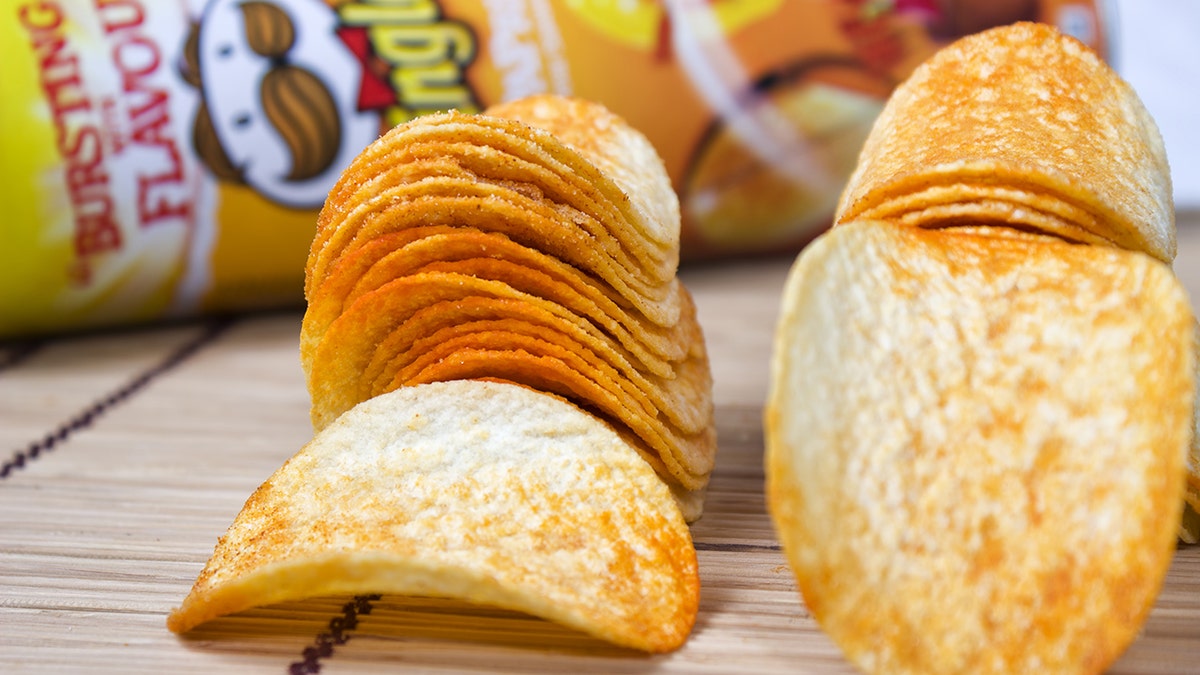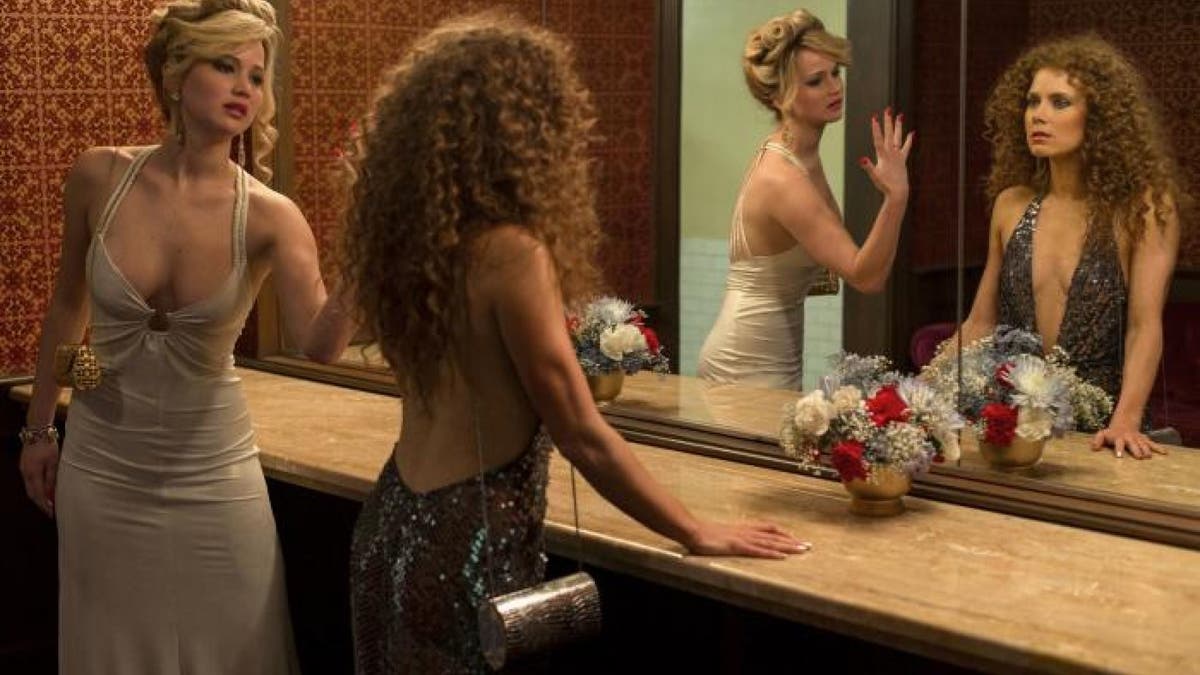Snacks. They’re what we shove into our faces when we’re feeling peckish.
Chips, popcorn, pretzels — anything we can get our hands on, really. But amid all that crunching and munching, we rarely give any thought to the innovators behind those snack foods, or the stories that helped to shape those delectable morsels. All we care about is where the next fistful of salty deliciousness is coming from, and how best to transport it from the bag to the bottomless void that is our bellies.
UNITED AIRLINES IS REPLACING BISCOFF COOKIES WITH ANOTHER BRAND
If we could take our attention away from our chips, however, we might be interested to learn:
1. Orville Redenbacher’s business partner is lesser known, thanks to an advertising company

Orville Redenbacher's business parter helped make popcorn into the ubiquitous snack it is today, but you'd be hard-pressed to name him. (George Rose/Getty Images)
Orville Redenbacher, whose name conjures up the sight and even smell of freshly popped popcorn, rose to the top of the popcorn pantheon alongside his business partner — but most of us would be hard-pressed to name him. Charlie Bowman first went into business with Redenbacher in 1951, after the duo worked together at an agricultural supply company before introducing the world to their proprietary brand of Red-Bow popcorn, the Wall Street Journal reported. It was an advertising agency, however, that suggested they market it as Orville Redenbacher’s Gourmet Popping Corn. (By many accounts, Redenbacher was in charge of the research and development of the product, while Bowman handled the business side of things.) The two sold the company in 1976 to Hunt-Wesson Foods Inc. (which was later acquired by ConAgra), and Redenbacher stayed on as the spokesperson for the brand.
2. Julia Child served Goldfish crackers on Thanksgiving
Julia Child, one of the most famous foodies in the world, was enough of a fan of Goldfish crackers to set them out for her Thanksgiving guests. Sheryl Julian — a friend of Child’s who spent two consecutive Thanksgiving meals at Child’s home, and who later became a Boston Globe food editor — once told the New York Times that Child would put Goldfish on the table to complement the “reverse martinis” (a lot of vermouth, a little bit of gin) she would serve with dinner.
CLICK HERE TO SIGN UP FOR OUR LIFESTYLE NEWSLETTER
3. The man who designed the iconic Pringles canister is buried in one

Milan, Italy - April 24, 2013: Pringles potato chips in front of snack size Pringles can. Pringles was invented by Procter and Gamble but in April Procter and Gamble agreed to sell the Pringles brand to Diamond Foods of California.
Fredric J. Baur, who revolutionized potato-crisp packaging for Proctor & Gamble with the invention of the Pringles can in 1966, instructed his children to place his ashes in one when his time finally came. Upon his death in May 2008, Baur’s children granted his request, placing a portion of his remains inside an Original Pringles canister for burial along with an urn containing the rest of his ashes, the Cincinnati Enquirer reported.
His son, Larry Baur, said at the time that he and his siblings purchased the canister that would hold their father’s ashes at a Walgreens on the way to the funeral home.
"My siblings and I briefly debated what flavor to use," Baur told Time. “But I said, 'Look, we need to use the original.'"
4. The Oreo came after the Hydrox — not the other way around

Cookie connoisseurs may be interested to know that Hydrox predates Oreo cookies. (iStock)
The Hydrox cookie is often thought to be an Oreo knockoff, when in fact the exact opposite is true. Sunshine Biscuits introduced the Hydrox — a sandwich cookie which shares striking similarities in shape, size and flavor as the Oreo — in 1908, about four years before the Oreo first hit the scene. The National Biscuit Company was able to outperform Sunshine in both advertising and distribution efforts, and the Oreo became (and remained) the better-selling of the two sandwich cookies.
FOLLOW US ON FACEBOOK FOR MORE FOX LIFESTYLE NEWS
Hydrox cookies continued to be available in some form or another until 2003, when they were discontinued by then-owner Kellogg’s before reappearing in 2008 for a limited time. A company called Leaf Brands has since acquired the Hydrox name, relaunching the cookies in 2015.
5. Cheetos has an official name for that orangey Cheetos dust
At the beginning of 2020, Frito Lay announced an official word for the dusty orange residue left all over your hands after eating Cheetos: “Cheetle.” The brand also positioned Cheetle-stained fingers as a badge of honor among snack aficionados, defining the term “Cheetle” as “the orange and red dust symbolic of true Cheetos fandom.”
6. Jennifer Lawrence once ruined a film’s costume with Doritos dust

Michael Wilkinson, the costume designer for "American Hustle," claimed that Jennifer Lawrence (left) got Doritos dust all over the metallic white dress she wore in a climactic scene. (Francois Duhamel/© 2013 Annapurna Productions)
Speaking of snack residue, Jennifer Lawrence once stained a costume with Doritos dust on the set of “American Hustle.” Michael Wilkinson, the film’s costume designer, hinted that Lawrence's habit of sloppy snacking ruined at least one of the white dresses she donned in the Oscar-nominated picture, but he claimed he had multiple backups ready to go in the event of any wardrobe emergency.
“Jennifer Lawrence is a very … let’s say … raw and intuitive young lady, and she’s not against eating Doritos and snack food in her costume,” Wilkinson said at a speaking engagement in 2014, which was documented by Vanity Fair. “So we were glad that we had a couple [backups].”
CLICK HERE TO GET THE FOX NEWS APP
7. Pennsylvania really, really loves its pretzels
The rest of the country might like pretzels but not nearly as much as folks in Pennsylvania. The Keystone State not only produces roughly 80 percent of all the pretzels consumed in the United States (at least as of 2015, according to History.com), but also consumes a lot of those pretzels itself: It has been estimated that the average Philadelphia resident eats 12 pounds of pretzels per year, Delish reported. For comparison, the average U.S. citizen is said to only consume around 2 pounds of pretzels per year.

